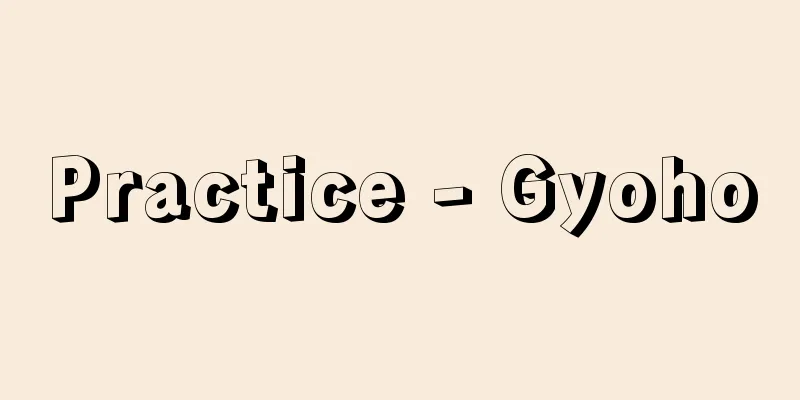Mizuhara Shuoushi

|
Haiku poet. Real name Yutaka. Pen name Kiutei. Born October 9, 1892, in Kanda, Tokyo. Graduated from the Faculty of Medicine at Tokyo Imperial University, he took over his family's obstetrics and gynecology hospital and midwifery school, and became a professor at Showa Medical College and an official at the Imperial Household Ministry's Imperial Physicians' Bureau. Koso-shi herself was fond of literature and had an interest in tanka poetry. In 1919 (Taisho 8), she composed haiku at the Kinome-kai group of the Shibugaki school, but was not satisfied and submitted her poems to Hototogisu in the same year. From 1920, she received instruction in tanka poetry composition from Kubota Utsubo for two years. From 1921, she attended regular meetings of Hototogisu. In 1922, she revived the Tokyo University Haiku Society. In 1921, she became a judge of assigned haiku for Hototogisu, and was given the lead spot in the miscellaneous poems column. Together with Awano Seiho, Takano Suju, and Yamaguchi Seishi, known as the "4S," they created the golden age of Hototogisu. Eventually, they came into conflict with Kyoshi, who advocated objective sketching, and in October 1956, they published "The Truth of Nature and the Truth of Literature" in their magazine Ashibi, which they edited, and became independent from Hototogisu. They sought haiku that were artistically matured through a rich inner life based on sketching. They nurtured talented young poets such as Ishida Hakyo and Kato Shuson, and liberated haiku into outdoor light, giving it a modern makeover. Amid the excitement of the so-called New Haiku Movement, Kosoushi briefly tried writing serial poems, but when the movement moved in the direction of accepting non-seasonal poems, he stopped writing serial poems and tried to protect seasonal, fixed-form haiku. He evacuated to Hachioji after the war and deepened his spiritual thoughts, but after giving up his medical practice in 1952 (Showa 27), he added maturity to his travel poems and personal poems. He became president of the Haiku Poets Association in 1987, received the Japan Art Academy Prize in 1988, and became a member of the Japan Art Academy in 1966. He is the author of many collections of haiku and essays, including "Katsushika" (1930), "Frost Forest" (1950), "Zansho" (1952), "Return of the Heart" (1954), and "Remaining Life" (1977), which are collected in the 21-volume "Complete Works of Mizuhara Shoso-shi." He passed away on July 17, 1981. [Terutoshi Hirai] Woodpeckers and the trees of the pasture rushing to pick up fallen leaves. Winter chrysanthemums are covered with only their own light. A waterfall falls, thundering through the ultramarine world. "Contemporary Haiku 1: Mizuhara Kosoushi's Collection of Haiku" (1968, Hakuohsha)" ▽ "The Complete Works of Mizuhara Kosoushi, 21 volumes (1977-79, Kodansha)" ▽ "The Complete Works of Mizuhara Kosoushi - By Seasonal Topic" (1980, Meiji Shoin)" ▽ "Mizuhara Kosoushi's Haiku and Essays, 5 volumes (1974, Kyuryudo)" ▽ "The World of Mizuhara Kosoushi, edited by Mizuhara Haruo (1992, Umeri Shobo)" ▽ "Mizuhara Kosoushi, edited by Kurahashi Yoson (1992, Kagyusha)" [References] | | | | | | Lesser |Source: Shogakukan Encyclopedia Nipponica About Encyclopedia Nipponica Information | Legend |
|
俳人。本名豊。号喜雨亭(きうてい)。明治25年10月9日東京・神田生まれ。東京帝国大学医学部を卒業、家業の産婦人科病院と産婆学校を継ぎ、昭和医専教授、宮内省侍医寮御用掛になった。秋桜子自身は文学を好み短歌に関心があった。1919年(大正8)『渋柿(しぶがき)』派木の芽会で作句するが飽き足らず、同年『ホトトギス』に投句。20年から2年間窪田空穂(くぼたうつぼ)について短歌実作の指導を受けた。21年から『ホトトギス』例会に出席。22年、東大俳句会を再興。24年『ホトトギス』課題句選者になり、雑詠欄巻頭を得る。阿波野青畝(あわのせいほ)、高野素十(すじゅう)、山口誓子(せいし)と4Sとよばれ、『ホトトギス』の黄金時代をつくる。やがて客観写生を提唱する虚子(きょし)と対立、31年10月、主宰誌『馬酔木(あしび)』に「自然の真と文芸上の真」を発表、『ホトトギス』から独立した。写生を基礎に豊かな内面によって芸術的に熟成させる俳句を求めた。石田波郷(はきょう)、加藤楸邨(しゅうそん)ら優れた若手を育て、また俳句を外光のなかに解放し近代的なものに一新した。新興俳句運動と称される盛り上がりのなかで秋桜子は一時連作を試みるが、運動が無季容認の方向に進むと、連作をやめ有季定型俳句を守ろうとした。戦災で八王子に疎開、心境を深めたが、52年(昭和27)医業を廃してからは、旅の句や身辺雑詠に円熟味を加えた。62年俳人協会会長、63年芸術院賞受賞、66年芸術院会員。『葛飾(かつしか)』(1930)、『霜林(そうりん)』(1950)、『残鐘(ざんしょう)』(1952)、『帰心』(1954)、『余生』(1977)などたくさんの句集や論著があり、『水原秋桜子全集』全21巻に収められている。昭和56年7月17日没。 [平井照敏] 啄木鳥(きつつき)や落葉をいそぐ牧(まき)の木々 『『現代の俳句1 水原秋桜子句集』(1968・白凰社)』▽『『水原秋桜子全集』全21巻(1977~79・講談社)』▽『『水原秋桜子全句集――季題別』(1980・明治書院)』▽『『水原秋桜子俳句と随筆集』全5巻(1974・求龍堂)』▽『水原春郎編著『水原秋桜子の世界』(1992・梅里書房)』▽『倉橋羊村編著『水原秋桜子』(1992・蝸牛社)』 [参照項目] | | | | | | |出典 小学館 日本大百科全書(ニッポニカ)日本大百科全書(ニッポニカ)について 情報 | 凡例 |
Recommend
headache
(1) headache Headaches are classified into primary...
Ternifine
...However, the development of stone tool making ...
Custom-made mouse pattern
...5 acts. Also known as "Nezumi Kozo."...
Rowing
…Both of them boast high performance, using ultra...
Kakugosha - Kakugosha
...With the aims of "renovating academic fie...
artificial pneumothorax
...Pneumothorax is broadly classified into artifi...
Ubayuri - Ubayuri
A perennial plant of the lily family (APG classif...
Katori
〘Noun〙 (A variation of "kataori (solid weave)...
"Le songe d'or" (English spelling)
... Pierrot, who became the most representative c...
Newyorker
…It was one of the pioneering attempts of the pen...
Padeloup
…Etienne Roffet and Claude de Picques are particu...
Vetus Latina
…These were then circulated by various local text...
Osatoyo - Osatoyo
…This kiln was a small, single-chambered snake ki...
Devşirme (English spelling)
In the Ottoman Empire, Christian children (aged 8 ...
Noricum (English spelling)
The name of the region that included the southern ...









